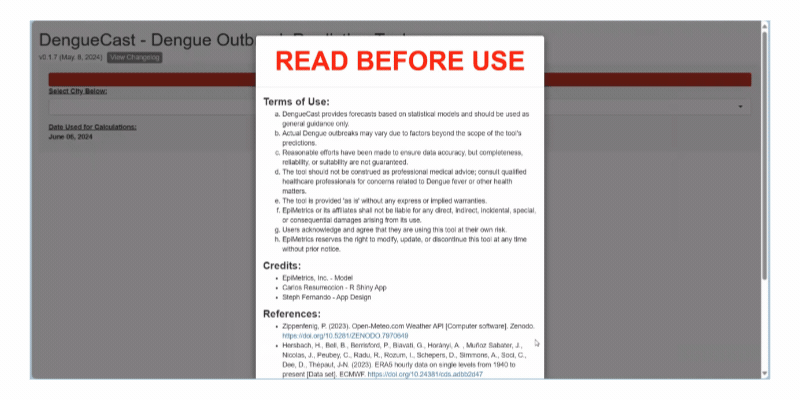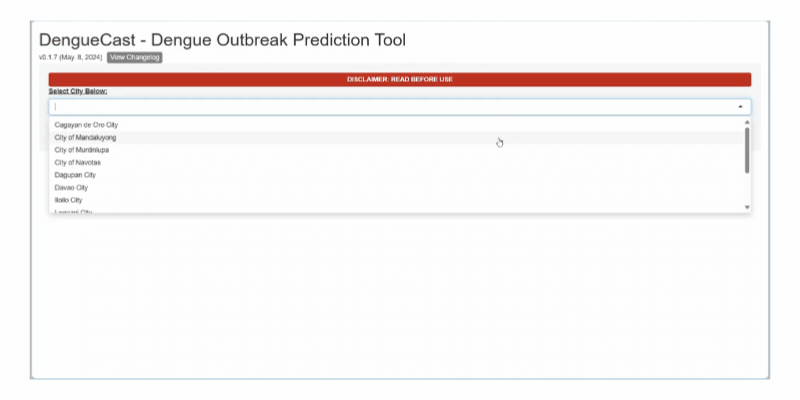DengueCast
DengueCast is a prediction tool that forecasts a dengue outbreak using the maximum temperature, rainfall, and wind speed, lagged by 4 weeks (i.e., weather data from 4 weeks prior) in 12 Philippine cities, namely, (1) Cagayan de Oro City, (2) Mandaluyong City, (3) Muntinlupa City, (4) Navotas City, (5) Dagupan City, (6) Davao City, (7) Iloilo City, (8) Legazpi City, (9) Mandaue City, (10) Palayan City, (11) Tacloban City, and (12) Zamboanga City.
Instructions

1. Select Your Location
1. Agree to the Disclaimer and the Terms of Use.
2. Choose the city or region for which you want to predict the dengue outbreak risk. The DengueCast model provides outbreak predictions only for the following cities: (1) Cagayan de Oro City, (2) Mandaluyong City, (3) Muntinlupa City, (4) Navotas City, (5) Dagupan City, (6) Davao City, (7) Iloilo City, (8) Legazpi City, (9) Mandaue City, (10) Palayan City, (11) Tacloban City, and (12) Zamboanga City.

2. Run the Prediction
Once a city is selected, the tool automatically analyzes the data and provides an outbreak risk assessment. Utilize the predicted probability for appropriate local public health interventions.
Important Considerations:
-
This is a predicted probability, not a definitive answer. The model considers historical weather data and its association with outbreaks, but other factors can influence outbreaks as well.
-
The app considers weather data lagged by a specific timeframe (i.e., 4 weeks). This means the predicted probability reflects the potential impact of recent weather patterns on future outbreaks.
-
The model has limitations. It's a supportive tool, not a replacement for traditional disease surveillance and control measures.
-
Other data sources should also be considered:
-
Trend of confirmed dengue cases
-
Clustering of cases within specific areas
-
Entomological data on mosquito populations
-
Information from community health workers and residents
-
Taking Action:
1. High-Predicted Risk
Initiate outbreak preparedness measures like public education campaigns, increased mosquito control activities, and resource allocation to high-risk areas.
2. Low-Predicted Risk
Maintain baseline surveillance, continue preventive efforts, and be prepared to re-evaluate if new information emerges.